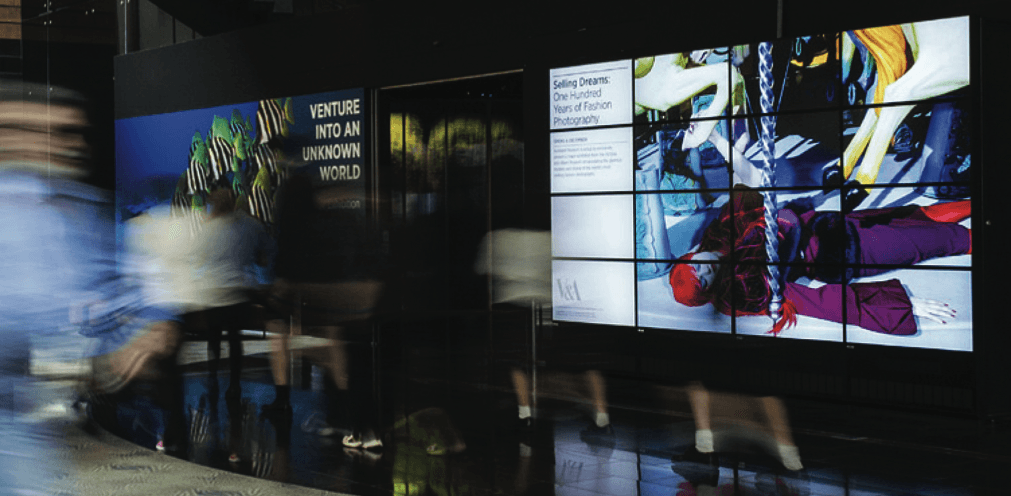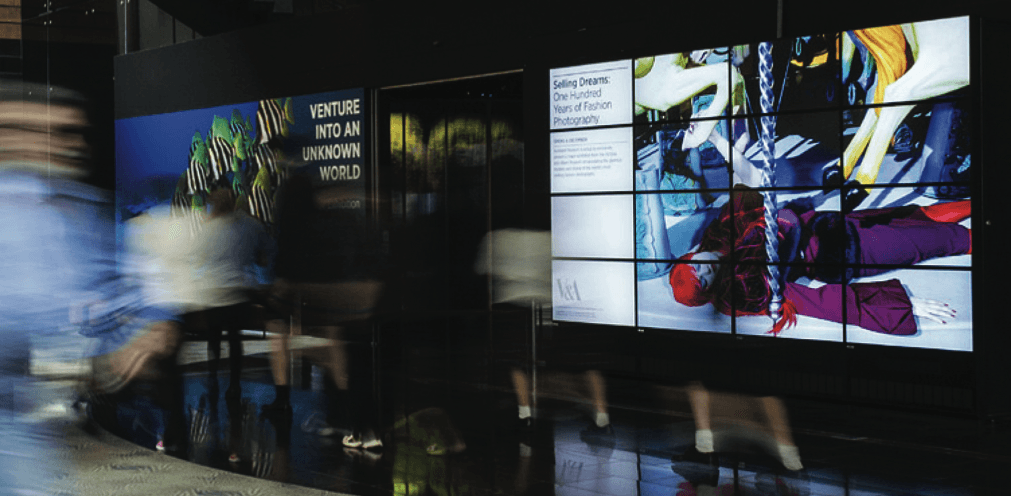
Guest Post: Jump-Starting An Enterprise Digital Signage Program
November 10, 2013 by guest author, Sean James

The era of static, non-interactive, digital media is over.

SANJAY MANANDHAR
Digital proliferation will continue as screen and other hardware costs keep going down and software and interactive capabilities continue to improve. Everywhere you look digital screens are being added – including within the enterprise.
For those tasked with executing the entire network – from concept to actual usage – the choices can be truly daunting.
Where to start
How do you tackle finding the right solution? Here’s a simple recipe that I recommend for bringing your enterprise into the age of smart digital signage that effectively communicates to and engages your employees, staff, students or audience:
- Figure out your content strategy
- Go with a cloud solution but do your homework about security
- Finally, the “aha” is not in those large displays but in the software
Figure out your content strategy
In a nutshell, your content strategy consists of what content to place where and when. This query is deceptively simple, but quite difficult to execute. Here are some best practices we have observed that will lay the foundation to an engaging, audience-centric experience.
Identify your business objective: An organization should first determine what its business objective is. It may sound basic, but defining a clear business objective for an enterprise digital signage solution will force you to define and prioritize the capabilities and features that you require in a communications platform – and ultimately become the basis for choosing the right platform.
Choose your content mix: Once the business objective is clear, the next step is to determine what type of content should be published and maintained across your network. Digital content covers a broad spectrum of formats, feeds, and file sizes – each with its own user experience benefit. Graphics, videos, images, text, RSS, streaming, social, or user-generated content all can play an important role in communicating across an enterprise.
One of most important, and often overlooked, criteria when considering your content mix across a digital display network is the end- user experience. The better your digital content engages the audience in front of each screen, the more successful your communication strategy will be. In order to break through and truly connect with your audience, enterprises must consider how timely, entertaining, engaging, informative and aesthetically pleasing the content is.
What’s your frequency ( … of updates)?: Once the business objective and content mix are defined, the frequency of content updates should be obvious. The best practice is for a small core group of people from different departments to meet frequently (at least once a week) to decide what new content to introduce across the network. Content will also evolve over time so you don’t need to get everything defined and planned out the first week, BUT you do need to have something that is relevant and engaging on the first day. If you lose the audience early on–meaning if they don’t see the screen network as a reliable source of updated, pertinent information–it will be very difficult to win them back!
Get In The Cloud
Go with a cloud solution, but do your homework about security.
The smart money is in the cloud today, but you have to ask what it means to be–in the cloud. Typically, this means you do not have to run your own server technology, which should be a welcomed development to your IT team– but it might not be received that way. You may get significant resistance from IT for taking control of your enterprise’s digital network.
Increasingly, the stalwart ‘cloud-opposing’ IT folks in industries (like insurance companies, higher-education and banks) have realized that their workload is actually significantly lighter thanks to the cloud.
Acceptable security levels can vary, so you should do your homework and ask many questions about security of your data and of your transmission in the cloud–this is where your IT team can ask questions and feel assured that their concerns are being addressed.
Software Is Where The Action Is
Finally, the “a-ha” is not in those large displays, but in the software People used to start a digital signage project by first spec-ing the display hardware because that was the most visible–and in those days the most expensive.
Today, you can get any commercial-grade display you want–just pick the size you need.
Software is a different matter entirely and you need to match the sophistication of the software with the complexity of your needs. Best practice is to get the software that you need today, and will also meet your needs for the next five years. It is important to stick with software and developers that already have essential features from the start, but also are constantly developing new functionality that will be of interest to you as your digital communications program grows and your needs evolve in the future.
The operating system of the software used to be primarily Windows-based, but today the best practice now is Linux or Android-based.
Jumpstarter Checklist
Here’s a simple checklist that will help define what’s most important to YOU when selecting a software platform:
[checklist]
- Is the software 100% browser-based (i.e. can it manage the network using any kind of device from any kind of browser?)
- Can the software easily scale from a single unit to thousands of units or more?
- Are users’ roles and responsibilities configurable by that customer?
-
Can the software integrate real-time enterprise data, as well as social media data such as Twitter or Facebook?
- If you have a need for user generated content (UGC), does the software have a moderation engine built-in?
-
Will you receive system upgrades for the software remotely and automatically? For free?
- How user-friendly is the interface of the software? Is there drag-n-drop ability for every feature?
-
How easy is it to make different content for different screens or groups of screens and how easy is it to make small changes once the entire network is running?
[/checklist]
There are many more considerations, but these few questions should get you going as you start planning for the deployment of an engaging, seamless and scalable enterprise digital signage network!
NOTE: This post is pulled from an eBook on digital signage. To download a PDF of the book, go to: http://aerva.com/ebooks/enterprise.php
[highlight color=”eg. yellow, black”]WANT A FORUM FOR YOUR THOUGHTS? SIXTEEN:NINE WELCOMES GUEST POSTS AS LONG AS THEY ARE INSTRUCTIVE AND ADVANCE KNOWLEDGE. WE DON’T TAKE THINY-VEILED PRODUCT PITCHES. CONTACT US IF YOU ARE INTERESTED.[/highlight]



Leave a comment